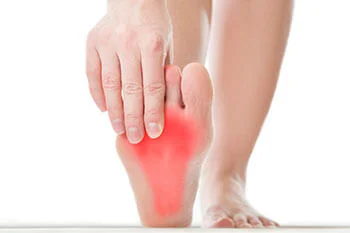Table of Contents
Introduction
A reddened, painful, and swollen big toe can be the result of a type of arthritis called gout. This uncomfortable condition is caused by an overabundance of uric acid in the body. If not properly eliminated through the kidneys, uric acid can collect in the joints, where it crystallizes. The result is pain that flares up suddenly and stays active for up to a week or more. Risk factors for developing gout include age, diet, obesity, and genetics. Gout cannot be cured, but it can be treated by a foot doctor who is a specialist in dealing with this condition. Treatment options include non-steroidal anti-inflammatory medication, changes in diet, and certain lifestyle modifications. One of the best methods of preventing gout flare-ups is reducing the amount of purines in the foods that are eaten. Seafood, red meat, shellfish, and drinks sweetened with large amounts of sugar fall into this category. Reducing the amount of alcoholic beverages and caffeine also helps, along with increasing exercise, drinking more water, and losing weight. For professional help in managing gout attacks, it is suggested that you make an appointment with a podiatrist.
Gout is a painful condition that can be treated. If you are seeking treatment, contact one of our podiatrists of Integrative Foot & Ankle Centers of Washington. Our doctors can provide the care you need to keep you pain-free and on your feet.
What Is Gout?
Symptoms
- Intense Joint Pain – Usually around the large joint of your big toe, and it most severe within the first four to twelve hours
- Lingering Discomfort – Joint discomfort may last from a few days to a few weeks
- Inflammation and Redness -Affected joints may become swollen, tender, warm and red
- Limited Range of Motion – May experience a decrease in joint mobility
Risk Factors
- Genetics – If family members have gout, you’re more likely to have it
- Medications – Diuretic medications can raise uric acid levels
- Gender/Age – Gout is more common in men until the age of 60. It is believed that estrogen protects women until that point
- Diet – Eating red meat and shellfish increases your risk
- Alcohol – Having more than two alcoholic drinks per day increases your risk
- Obesity – Obese people are at a higher risk for gout
Prior to visiting your podiatrist to receive treatment for gout, there are a few things you should do beforehand. If you have gout you should write down your symptoms–including when they started and how often you experience them, important medical information you may have, and any questions you may have. Writing down these three things will help your podiatrist in assessing your specific situation so that he or she may provide the best route of treatment for you.


